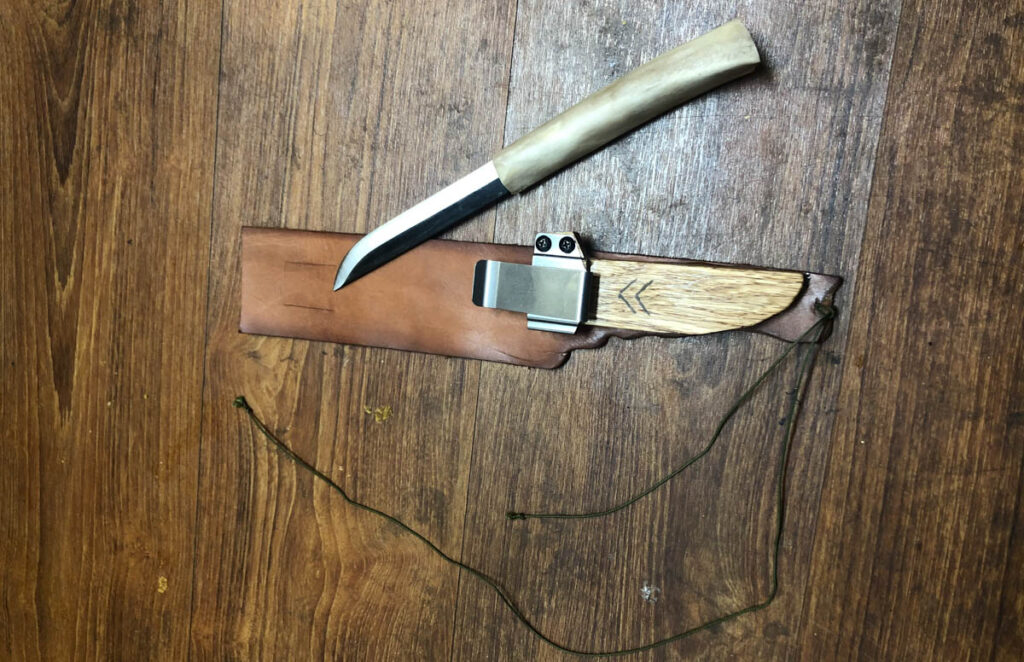“Skywoman bent and spread the mud with her hands across the shell of the turtle. Moved by the extraordinary gifts of the animals, she sang in thanksgiving and then began to dance, her feet caressing the earth. The land grew and grew as she danced her thanks, from the dab of mud on Turtle’s back until the whole earth was made. Not by Skywoman alone, but from the alchemy of all the animals’ gifts coupled with her.”
Robin Kimmerer Braiding Sweetgrass
Turtle Island features stories about the cultures of the United States of America and Canada. Many of these are featured in our issue ᏍᎩ Gratitude.
✿
 Art Jewelry Forum: We advocate for the field of art jewelry - Nathalie Mornu covers the wide range of programs AJF provides to ensure it responds to the needs of its members.
Art Jewelry Forum: We advocate for the field of art jewelry - Nathalie Mornu covers the wide range of programs AJF provides to ensure it responds to the needs of its members. Center for Craft: The importance of space for collective action and belonging - Stephanie Moore tells how the Center for Craft rebuilt itself after losing its base in a university ten years ago.
Center for Craft: The importance of space for collective action and belonging - Stephanie Moore tells how the Center for Craft rebuilt itself after losing its base in a university ten years ago. Cerdeira: An artist village of stone and wood - Tatiana Simões introduces Karine Locatelli, whose work flourished in this idyllic Portuguese village.
Cerdeira: An artist village of stone and wood - Tatiana Simões introduces Karine Locatelli, whose work flourished in this idyllic Portuguese village. 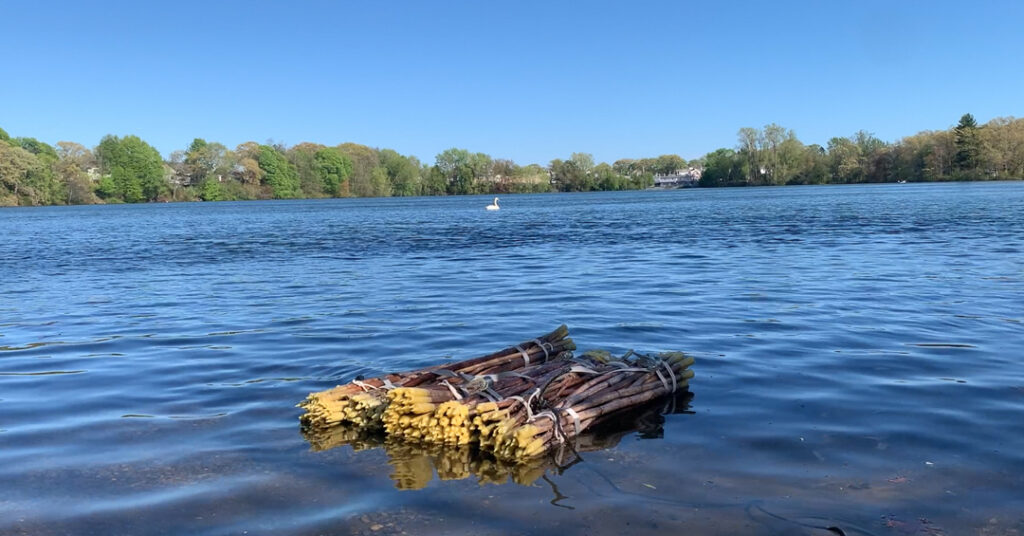 Japanese knotweed with a silver lining - Maxwell Fertik works with a globally invasive species to tell a story of local industrial devastation.
Japanese knotweed with a silver lining - Maxwell Fertik works with a globally invasive species to tell a story of local industrial devastation.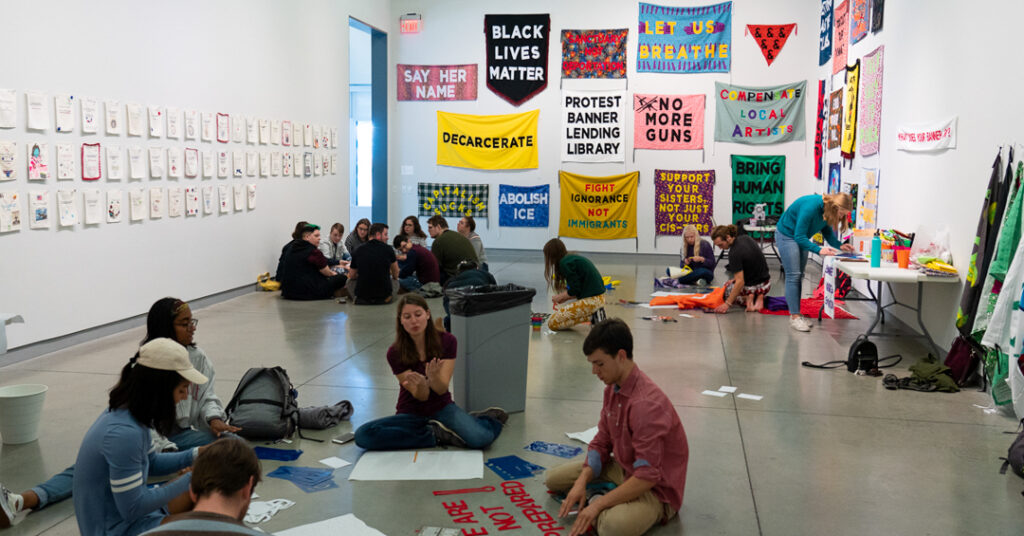 The Protest Banner Lending Library: Democracy in the making - Aram Han Sifuentes' banners aren't just about protest, the workshops for making them provide a rare opportunity for open dialogue between political differences.
The Protest Banner Lending Library: Democracy in the making - Aram Han Sifuentes' banners aren't just about protest, the workshops for making them provide a rare opportunity for open dialogue between political differences. Vginmary: A Madonna of street art - Emma Cieslik documents Vginmary's project to re-sacralise the vulva in Poland's religious iconography.
Vginmary: A Madonna of street art - Emma Cieslik documents Vginmary's project to re-sacralise the vulva in Poland's religious iconography.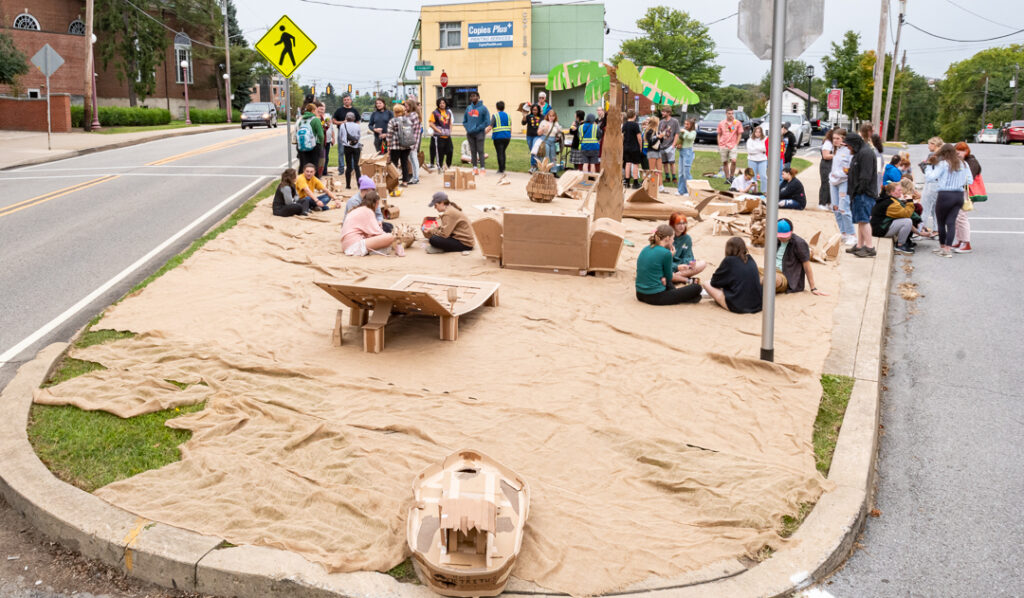 Traffic Island Oasis - Sharon Massey and Sean Derry find a rare piece of public land on which to stage fanciful worlds in cardboard.
Traffic Island Oasis - Sharon Massey and Sean Derry find a rare piece of public land on which to stage fanciful worlds in cardboard.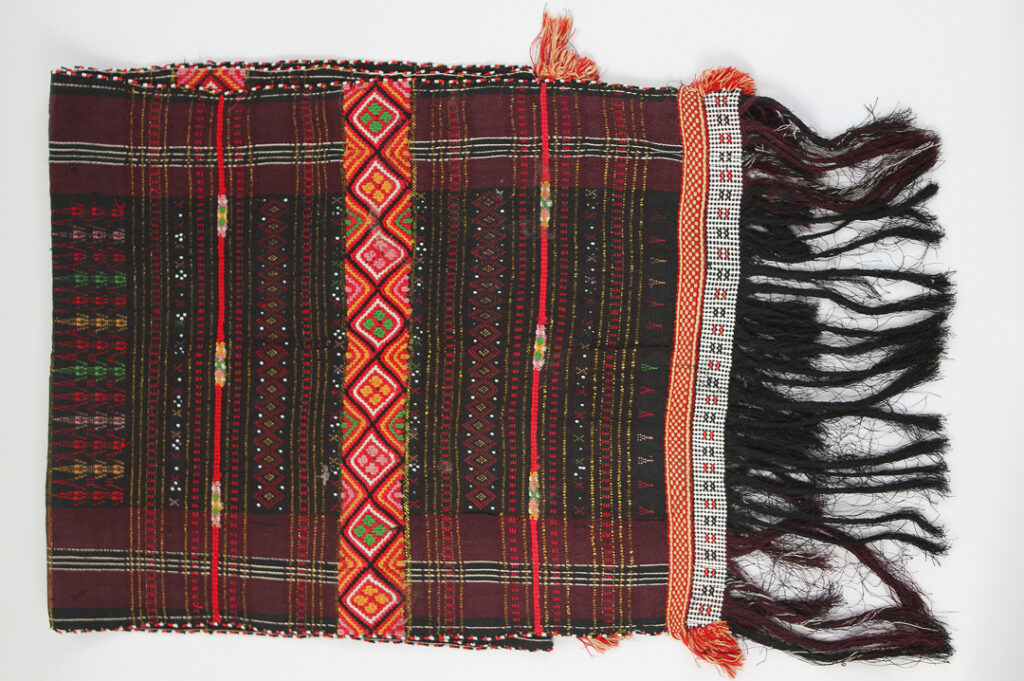 Efficacious Intimacy ✿ Learnings from the Jugaad Project - Join Urmila Mohan and authors to discuss a new book of the Jugaad Project that considers the material basis of religious and political beliefs.
Efficacious Intimacy ✿ Learnings from the Jugaad Project - Join Urmila Mohan and authors to discuss a new book of the Jugaad Project that considers the material basis of religious and political beliefs.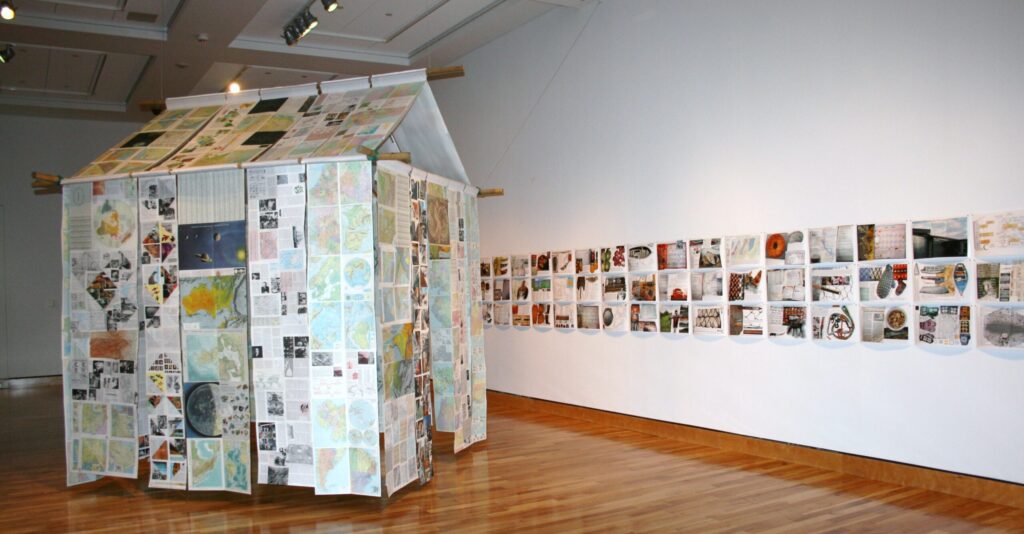 Pam Hall ✿ The Encyclopedia of Local Knowledge - Enjoy a podcast from Newfoundland about an art project based on place-specific know-how.
Pam Hall ✿ The Encyclopedia of Local Knowledge - Enjoy a podcast from Newfoundland about an art project based on place-specific know-how.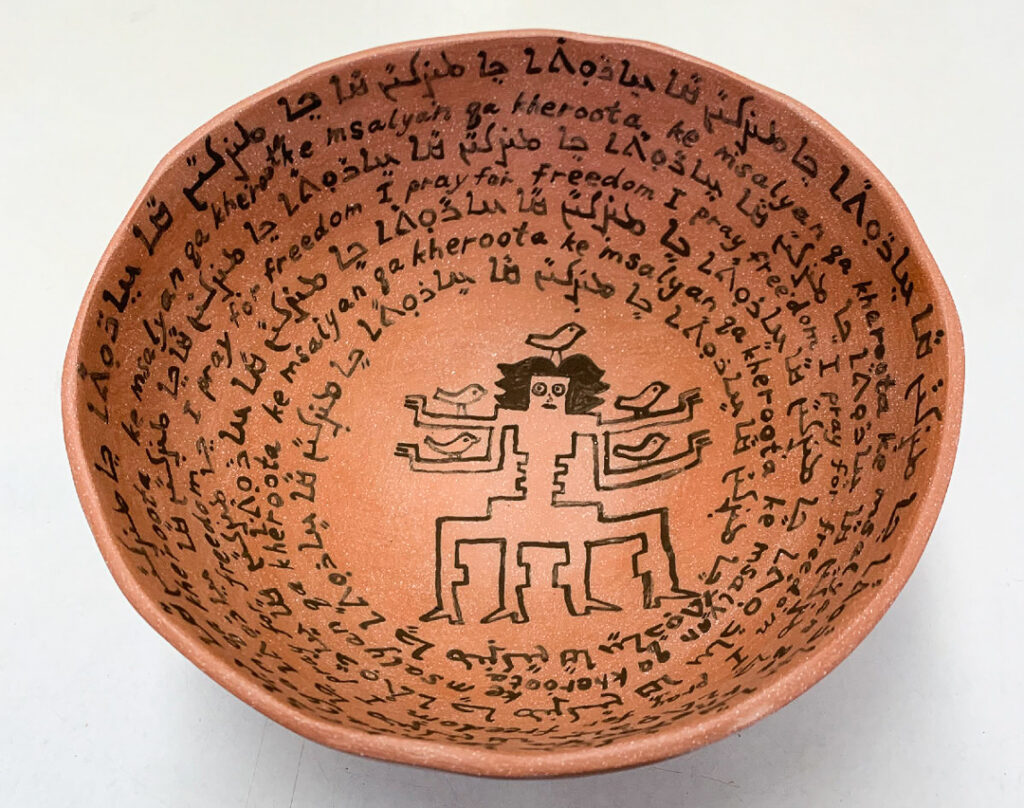 Esther Elia ✿ An Assyrian Prayer Bowl - Our December laurel is awarded to an Assyrian living in the USA who makes prayer bowls with messages of cultural resilience.
Esther Elia ✿ An Assyrian Prayer Bowl - Our December laurel is awarded to an Assyrian living in the USA who makes prayer bowls with messages of cultural resilience. The Mashrabiya Project: Life behind the screen - We speak with Jennifer-Navva Milliken about a project at her Museum of Art and Wood that responds to the ubiquitous lattice screen of the Islamic world.
The Mashrabiya Project: Life behind the screen - We speak with Jennifer-Navva Milliken about a project at her Museum of Art and Wood that responds to the ubiquitous lattice screen of the Islamic world. Sarah Khan ✿ Spoons as weapons of mass creation - Our September laurel Sarah K Khan, inspired by a sixteenth-century Indian Cookbook in Persian, decorates her spoons in honor of women’s knowledge.
Sarah Khan ✿ Spoons as weapons of mass creation - Our September laurel Sarah K Khan, inspired by a sixteenth-century Indian Cookbook in Persian, decorates her spoons in honor of women’s knowledge.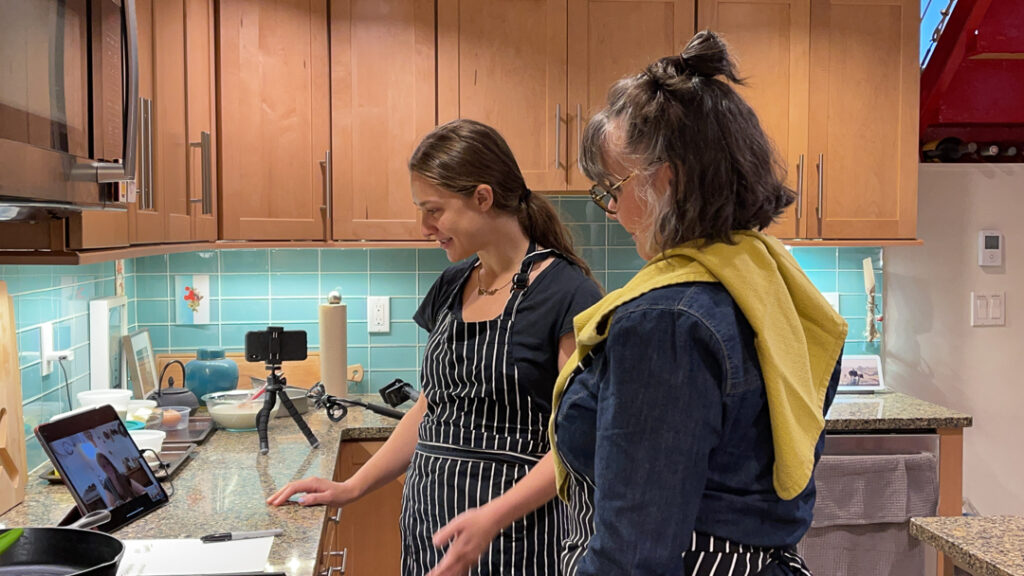 You Stir the Pot: Recipes for change - Victoria Manganiello tells us about a social change project that invites artists to apply their creativity to making recipes for a better world.
You Stir the Pot: Recipes for change - Victoria Manganiello tells us about a social change project that invites artists to apply their creativity to making recipes for a better world.  A gaiwan for my father - Mia Riley revisits her father's tea cabinet and resolved to use her ceramic skills to make him special traditional tea cups.
A gaiwan for my father - Mia Riley revisits her father's tea cabinet and resolved to use her ceramic skills to make him special traditional tea cups.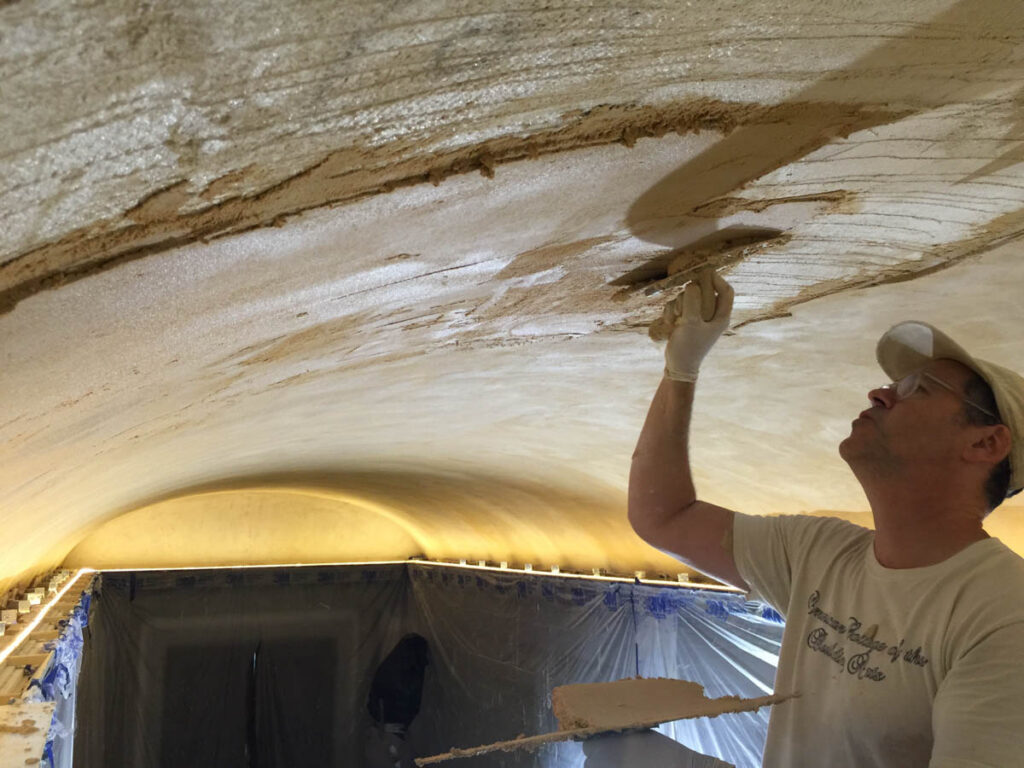 Patrick Webb ✿ A generous coat of craft thinking - Kevin Murray interviews Patrick Webb about his perspective on the world as a plasterer.
Patrick Webb ✿ A generous coat of craft thinking - Kevin Murray interviews Patrick Webb about his perspective on the world as a plasterer.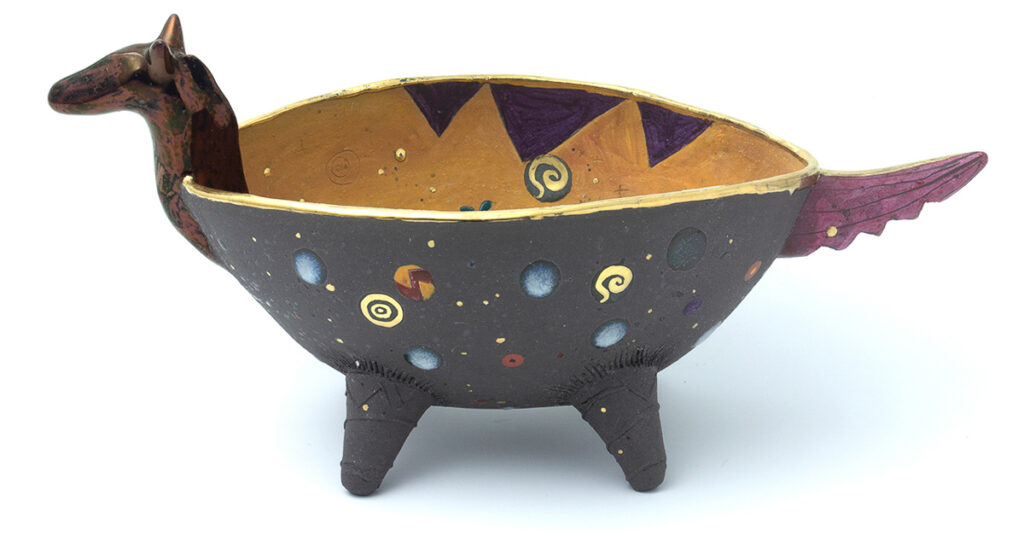 Imagining a nostalgic future: The cosmic ceramics of Douglas Black - Liliana Morais explores the world of a US-born ceramicist who gives expression to planetarity from his self-built house in the mountains of Japan.
Imagining a nostalgic future: The cosmic ceramics of Douglas Black - Liliana Morais explores the world of a US-born ceramicist who gives expression to planetarity from his self-built house in the mountains of Japan. Cherokee basket ecology - The ᎢᏛᏍᎦ ᏫᏥᏤᎢ ᎠᎵᏰᎵᏒ Weaving Across Time exhibition reflects the profound role of basket making in a custodianship of nature.
Cherokee basket ecology - The ᎢᏛᏍᎦ ᏫᏥᏤᎢ ᎠᎵᏰᎵᏒ Weaving Across Time exhibition reflects the profound role of basket making in a custodianship of nature.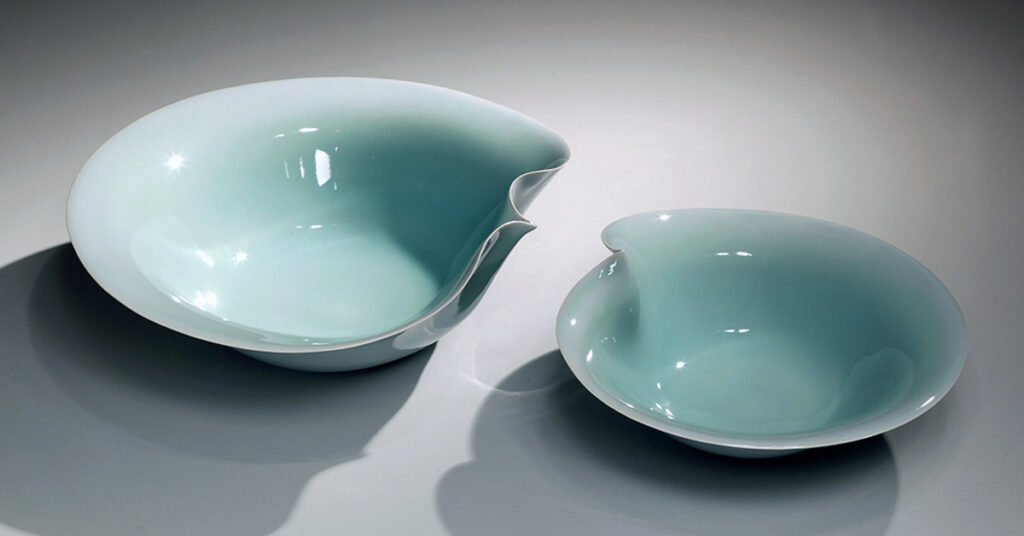 Kishōtenketsu: Kawase Shinobu’s celadon journey - Bonnie B. Lee writes about the four-part structure from Chinese poetry that informs the ceramics of Kawase Shinobu.
Kishōtenketsu: Kawase Shinobu’s celadon journey - Bonnie B. Lee writes about the four-part structure from Chinese poetry that informs the ceramics of Kawase Shinobu. A Kolam for Washington DC - Shanthi Chandrasekar tracks the memories of Kolam adornment rituals that now inspire a homage to the US Vice-President.
A Kolam for Washington DC - Shanthi Chandrasekar tracks the memories of Kolam adornment rituals that now inspire a homage to the US Vice-President.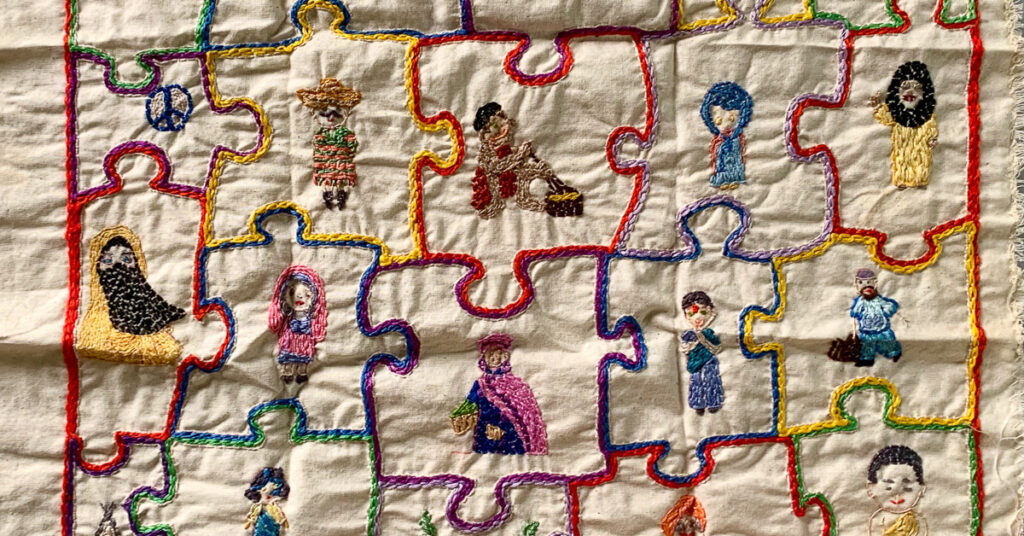 25 Million Stitches: Threading the misplaced multitude - Doug Kim presents a global collaborative project by Jennifer Kim Sohn that seeks to measure the massive human displacement around the world with a collective tapestry.
25 Million Stitches: Threading the misplaced multitude - Doug Kim presents a global collaborative project by Jennifer Kim Sohn that seeks to measure the massive human displacement around the world with a collective tapestry.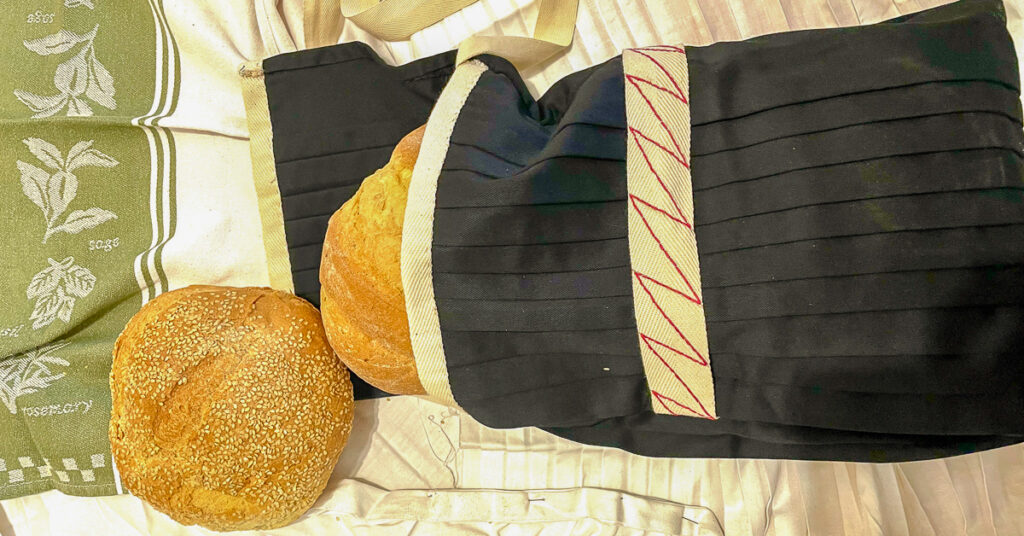 Mending collective memory: Eleni Gouga’s Bread-skirt Project - Eleni Gouga sought to revive the heirloom black woollen skirts of northern Greece, which then became a satchel for traditional bread.
Mending collective memory: Eleni Gouga’s Bread-skirt Project - Eleni Gouga sought to revive the heirloom black woollen skirts of northern Greece, which then became a satchel for traditional bread.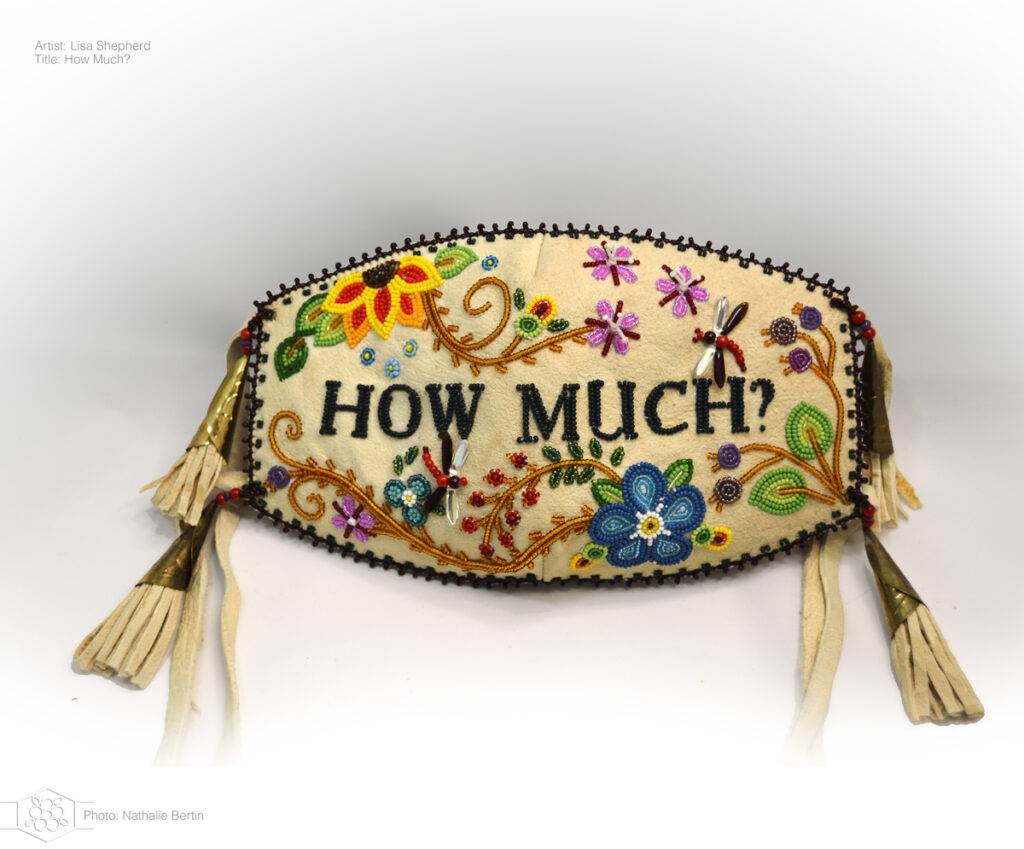 Breathe, together - In the Breathe Project, the creation of beaded masks expresses a distinct cultural energy, led by Indigenous artists from across Canada.
Breathe, together - In the Breathe Project, the creation of beaded masks expresses a distinct cultural energy, led by Indigenous artists from across Canada.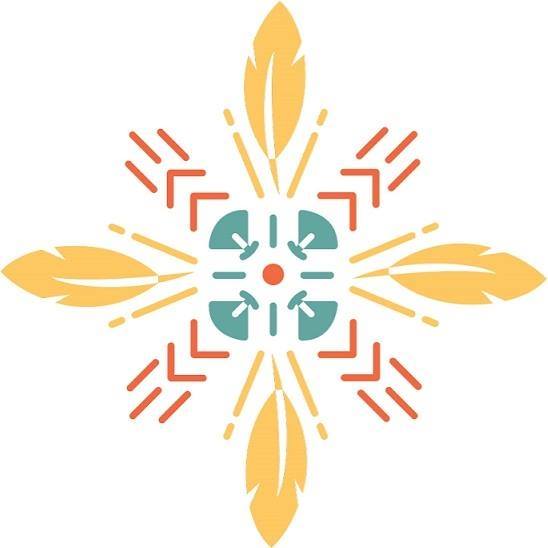 Canadian First Nations celebrate the longest day with a Social Distance Pow Wow - The growing significance of Canada’s Summer Solstice Indigenous Festival is challenged this year by lockdown. Like the Ojibwe "dreamcatcher", the spirit of this event is now being channelled online.
Canadian First Nations celebrate the longest day with a Social Distance Pow Wow - The growing significance of Canada’s Summer Solstice Indigenous Festival is challenged this year by lockdown. Like the Ojibwe "dreamcatcher", the spirit of this event is now being channelled online.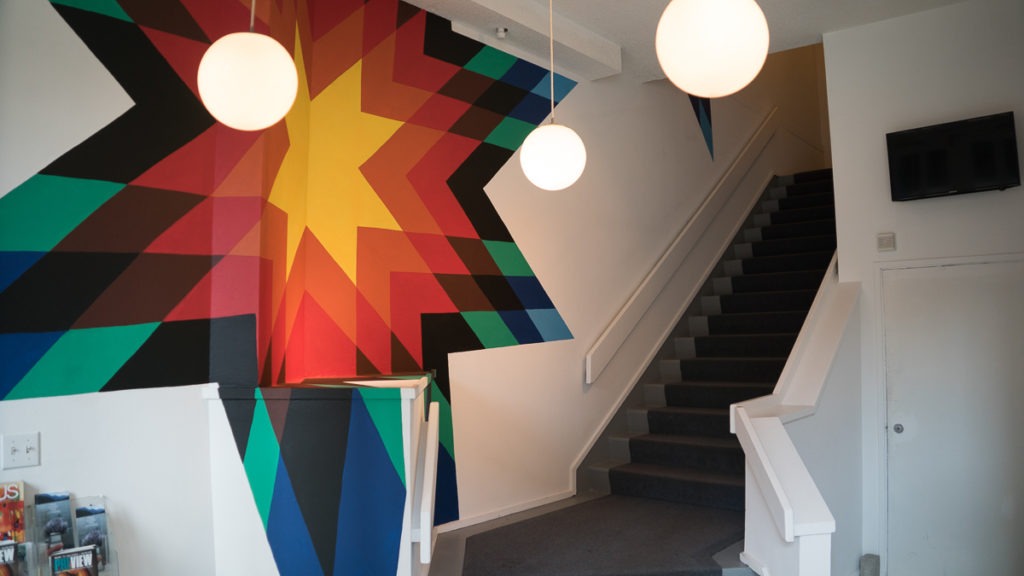 The Political-Poetic Journey of Two Métis/Cree Artists: Jesse Campbell and Michelle Poirier Brown - Lycia Trouton writes about two Canadian artists whose work reveals a flowering of Métis culture in response to the challenges of settler colonisation.
The Political-Poetic Journey of Two Métis/Cree Artists: Jesse Campbell and Michelle Poirier Brown - Lycia Trouton writes about two Canadian artists whose work reveals a flowering of Métis culture in response to the challenges of settler colonisation. JD Harrison ✿ Centerpiece for a crafted future - The reopening of Asheville's Center for Craft features a National Craft Innovation Hub, whose centrepiece is a table by Appalachian architect JD Harrison.
JD Harrison ✿ Centerpiece for a crafted future - The reopening of Asheville's Center for Craft features a National Craft Innovation Hub, whose centrepiece is a table by Appalachian architect JD Harrison.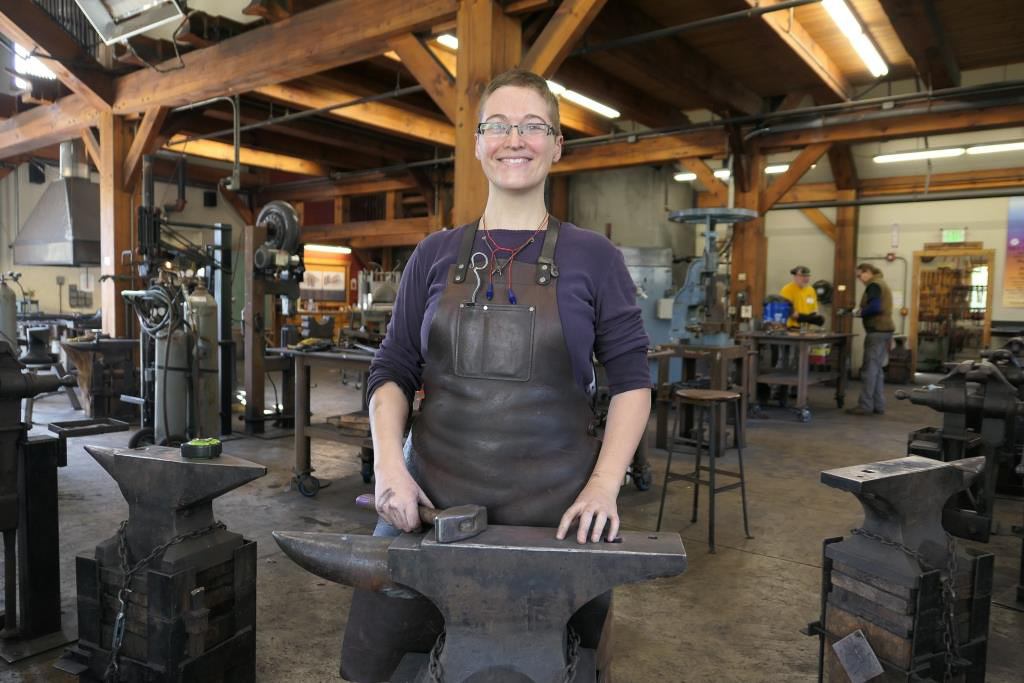 Quarterly essay: Dancing with the anvil - Michael Winkler is impressed by the resilience in the USA, embodied in those who continue to work with iron.
Quarterly essay: Dancing with the anvil - Michael Winkler is impressed by the resilience in the USA, embodied in those who continue to work with iron.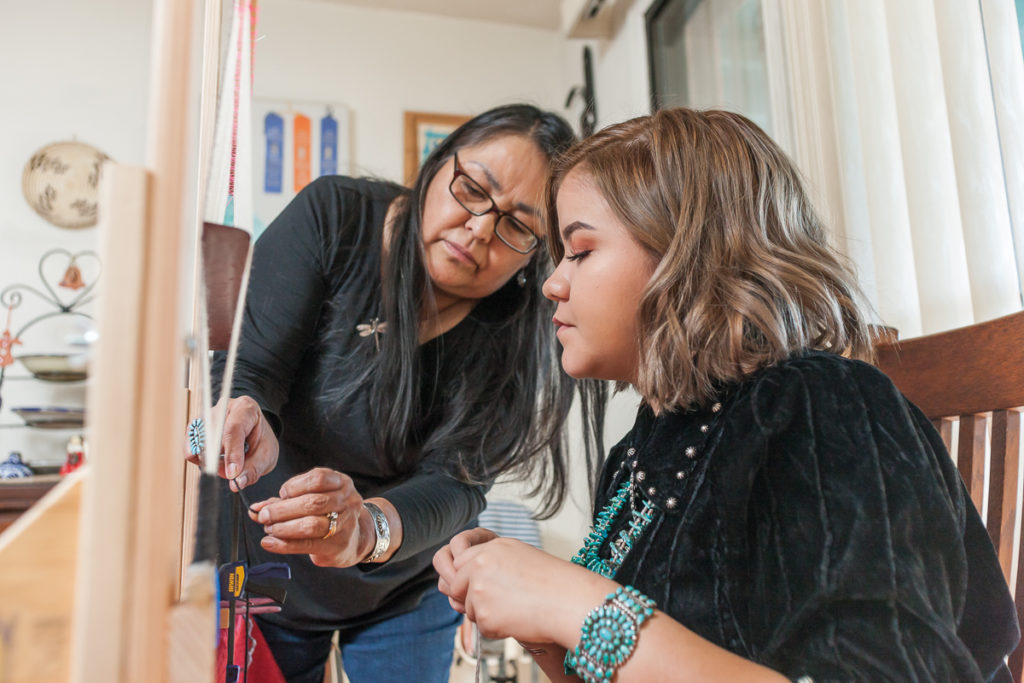 Spider Woman’s Children: The next generation of Navajo weavers - Barbara Teller Ornelas and Lynda Teller Pete introduce us to the ancient myth and bright future of Navajo rug weaving.
Spider Woman’s Children: The next generation of Navajo weavers - Barbara Teller Ornelas and Lynda Teller Pete introduce us to the ancient myth and bright future of Navajo rug weaving. Citizens of Craft: The inspiring Canadian model - The Canadian Crafts Federation campaign Citizens of Craft offers an important model for national craft advocacy.
Citizens of Craft: The inspiring Canadian model - The Canadian Crafts Federation campaign Citizens of Craft offers an important model for national craft advocacy.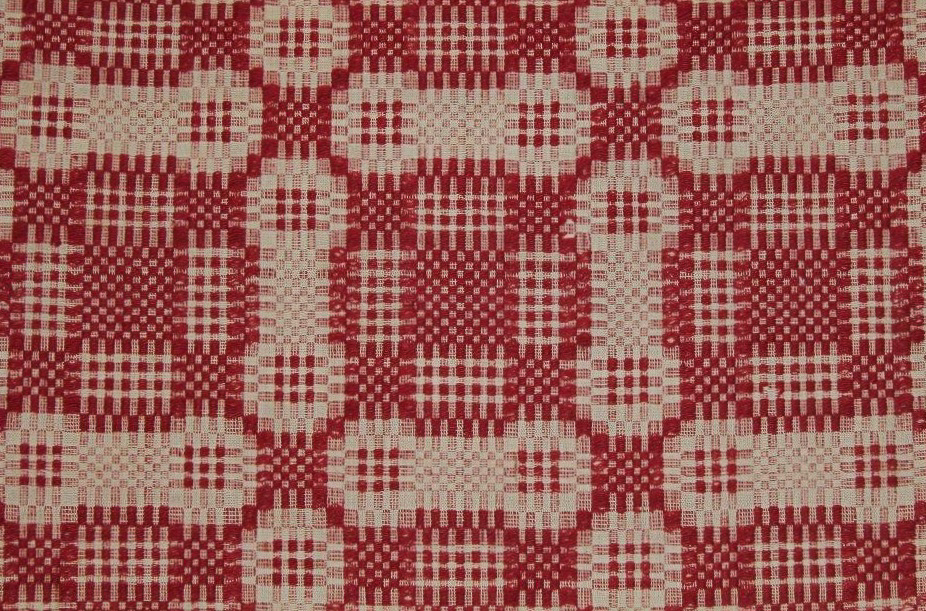 Presha’s Coverlet - Jeffrey Keith considers the bedcover made by his great-great-grandmother as a memoir and describes how its threads bind him to the southern mountains she called home.
Presha’s Coverlet - Jeffrey Keith considers the bedcover made by his great-great-grandmother as a memoir and describes how its threads bind him to the southern mountains she called home. Tania Larsson ✿ Hide uncovers the hidden - matt lambert interviews a Canadian jewellery artist about the process of making hide in Gwich’in culture
Tania Larsson ✿ Hide uncovers the hidden - matt lambert interviews a Canadian jewellery artist about the process of making hide in Gwich’in culture Dancing with the anvil - Michael Winkler is impressed by the resilience in the USA, emboded in those who continue to work with iron.
Dancing with the anvil - Michael Winkler is impressed by the resilience in the USA, emboded in those who continue to work with iron.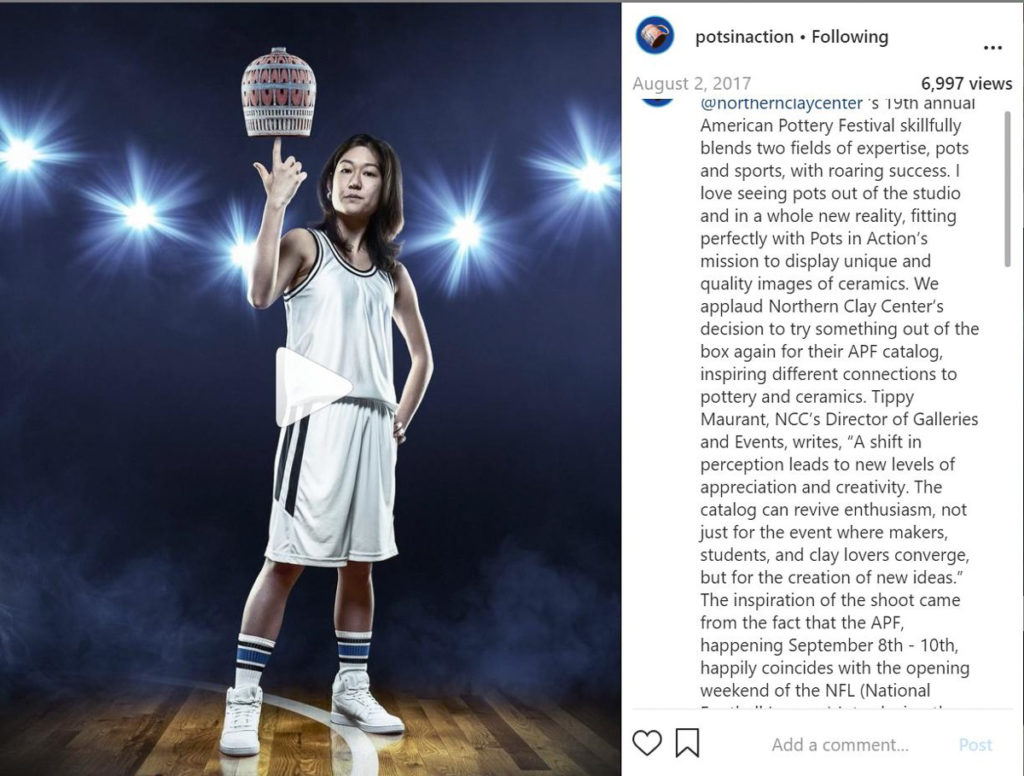 Pots in Action: The ceramics project that made Instagram sparkle - Ayumi Horie reflects on the groundbreaking Instagram project, Pots in Action—why she started it and why she has decided to finish it.
Pots in Action: The ceramics project that made Instagram sparkle - Ayumi Horie reflects on the groundbreaking Instagram project, Pots in Action—why she started it and why she has decided to finish it. Cherokee doubleweave baskets: “The handsomest baskets I ever saw.” - Anna Fariello introduces a history of Cherokee fibre, featuring the remarkable doubleweave basket.
Cherokee doubleweave baskets: “The handsomest baskets I ever saw.” - Anna Fariello introduces a history of Cherokee fibre, featuring the remarkable doubleweave basket. Grunge and graffiti repair - In the exhibition Expressive Repair, Lela Kulkarni finds Miron Kiselev, who helps translate graffiti to textiles.
Grunge and graffiti repair - In the exhibition Expressive Repair, Lela Kulkarni finds Miron Kiselev, who helps translate graffiti to textiles.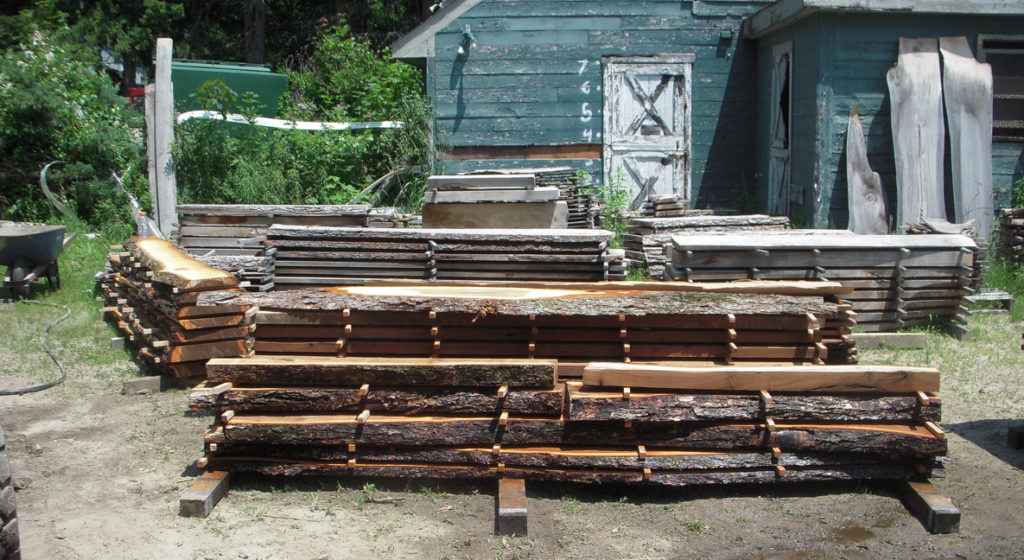 To rescue a world on the wane: A clarion call to woodworkers - D Wood argues that wood furniture should be more than just the appearance of its origins, but reflect its sourcing as well.
To rescue a world on the wane: A clarion call to woodworkers - D Wood argues that wood furniture should be more than just the appearance of its origins, but reflect its sourcing as well. 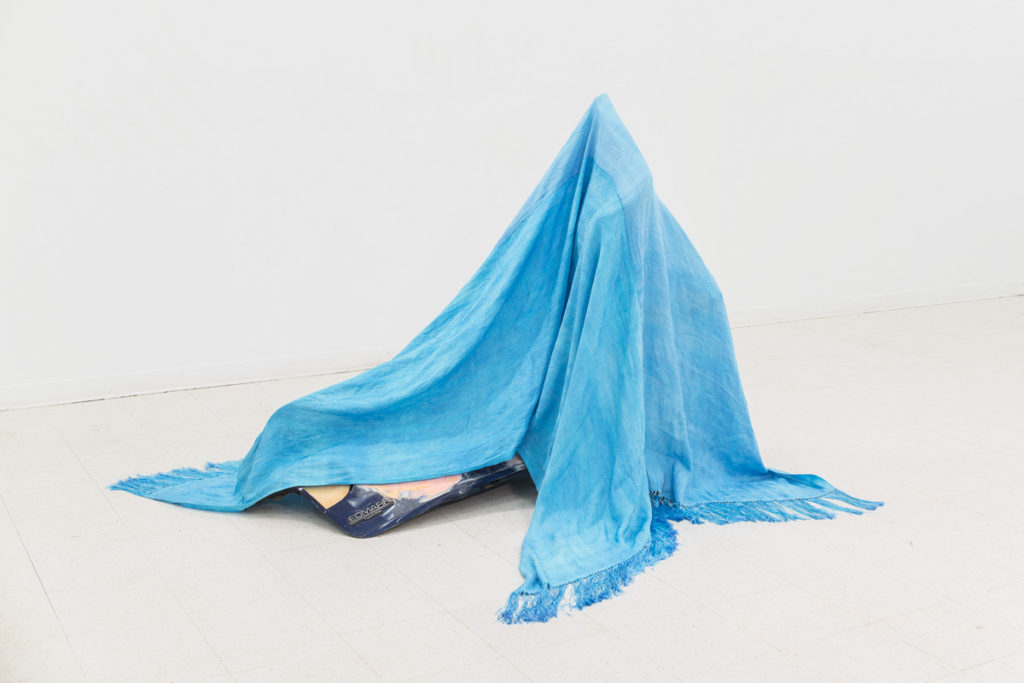 Tying down art in my own public Idaho - Lily Martina Lee is inspired by the regional variations across the mid-West in the way folks secure their load.
Tying down art in my own public Idaho - Lily Martina Lee is inspired by the regional variations across the mid-West in the way folks secure their load. Katie Miller ✿ Seattle lightscapes - Melissa Cameron tracks Katie Miller's progress from the barns of Nebraska to a Seattle filled with the light of the Pacific North-West.
Katie Miller ✿ Seattle lightscapes - Melissa Cameron tracks Katie Miller's progress from the barns of Nebraska to a Seattle filled with the light of the Pacific North-West.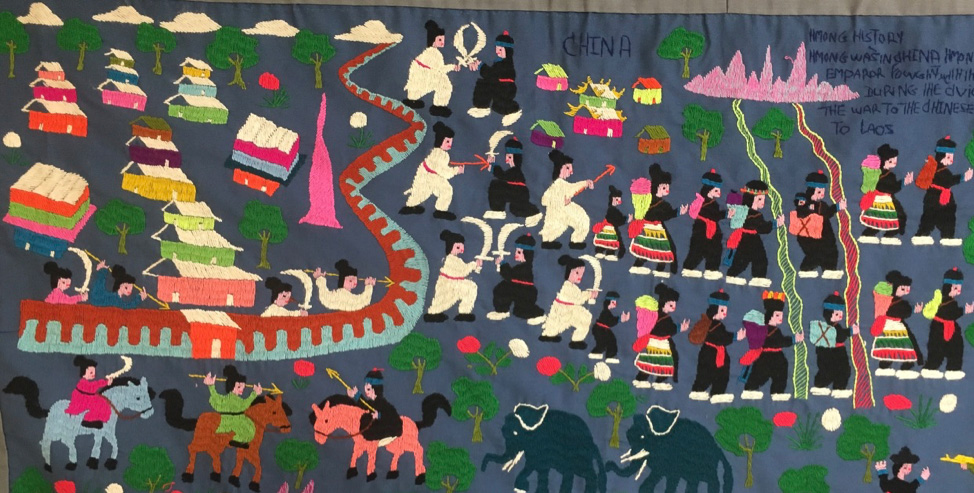 The fabric of memory: Story cloth as art and history for Hmong in USA - Mary Louise Buley-Meissner and Vincent Her pay homage to the embroidered stories of Hmong artist Xao Yang Lee.
The fabric of memory: Story cloth as art and history for Hmong in USA - Mary Louise Buley-Meissner and Vincent Her pay homage to the embroidered stories of Hmong artist Xao Yang Lee. How an island makes its makers: The artisans of Gabriola - Phillip Vannini explains why he was drawn to film the artisans on an idyllic island in the Salish Sea.
How an island makes its makers: The artisans of Gabriola - Phillip Vannini explains why he was drawn to film the artisans on an idyllic island in the Salish Sea.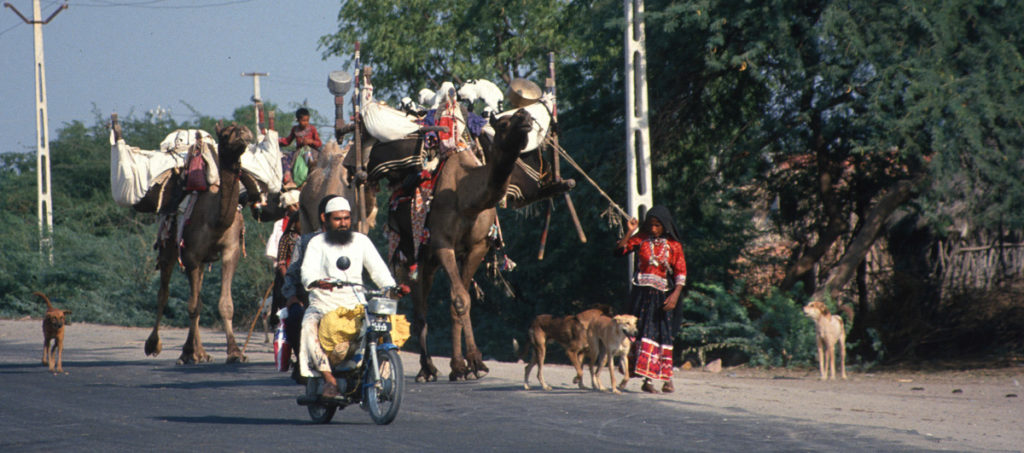 Cracking the colour code: The Maiwa-Khatri partnership - Charllotte Kwon and Abdul Jabbar Khatri share their sides of the story about their enduring Indian-Canadian partnership.
Cracking the colour code: The Maiwa-Khatri partnership - Charllotte Kwon and Abdul Jabbar Khatri share their sides of the story about their enduring Indian-Canadian partnership.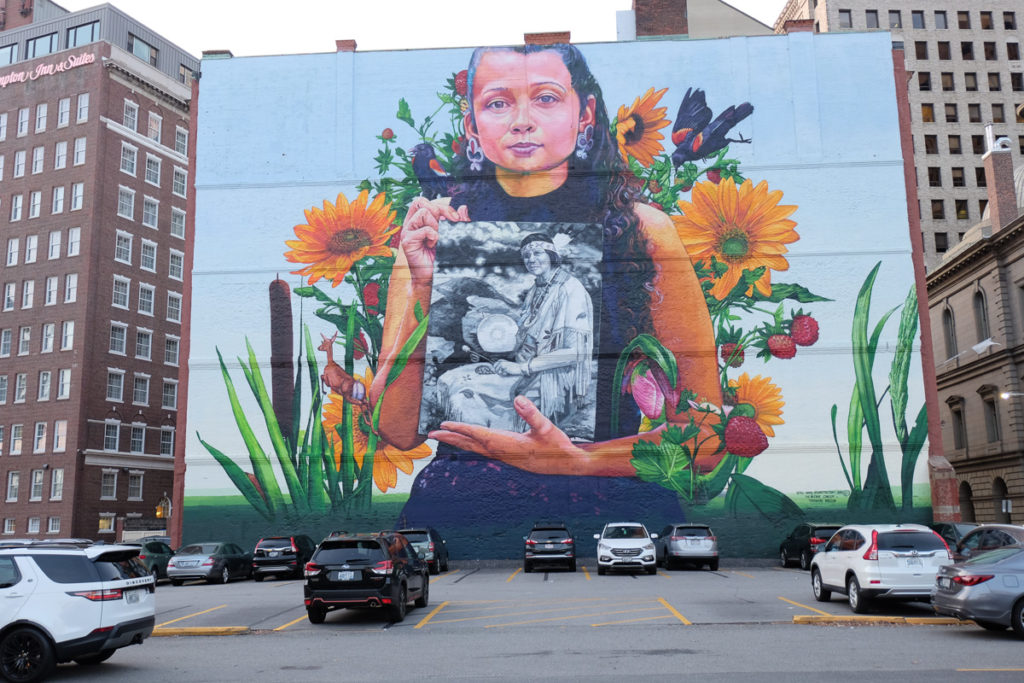 Visiting Tomaquag: The feel of wampum between your fingers - Lela Kulkarni learns how to make a wampum shine at the Tomaquag Museum.
Visiting Tomaquag: The feel of wampum between your fingers - Lela Kulkarni learns how to make a wampum shine at the Tomaquag Museum.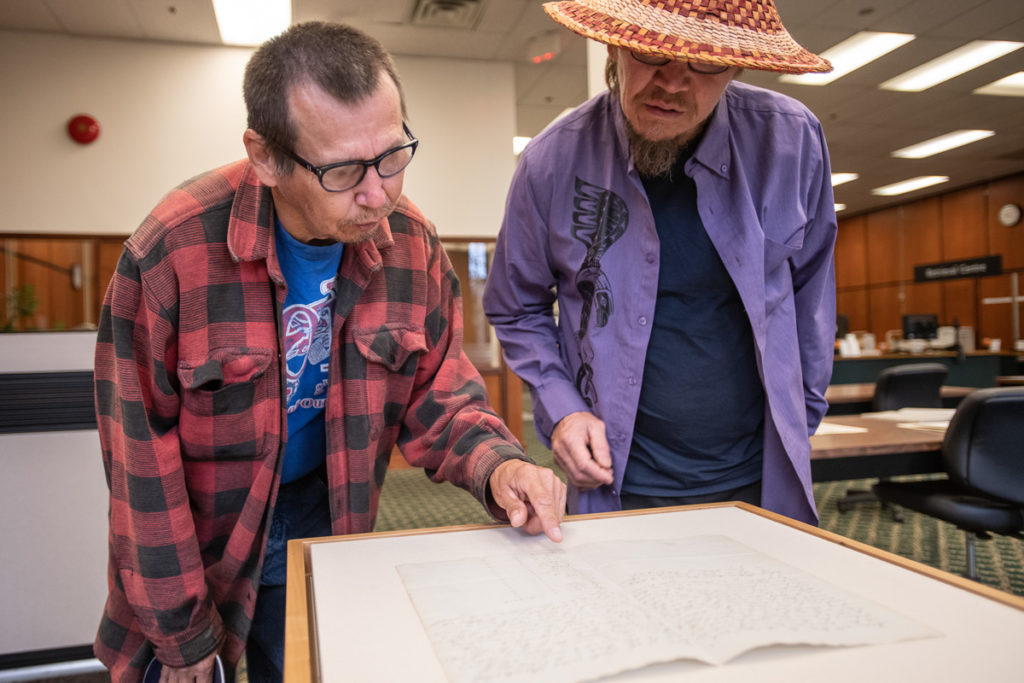 Gratitude in the archives - Rituals of thanksgiving have become an essential part of Genevieve Weber's work as an archivist as she confronts its colonial legacy.
Gratitude in the archives - Rituals of thanksgiving have become an essential part of Genevieve Weber's work as an archivist as she confronts its colonial legacy.  Dear Grandma, Thank you for being a maker: A Cowichan story - Damara Jacobs-Morris acknowledges her Grandma for passing on the sacred tradition of Cowichan knitting.
Dear Grandma, Thank you for being a maker: A Cowichan story - Damara Jacobs-Morris acknowledges her Grandma for passing on the sacred tradition of Cowichan knitting.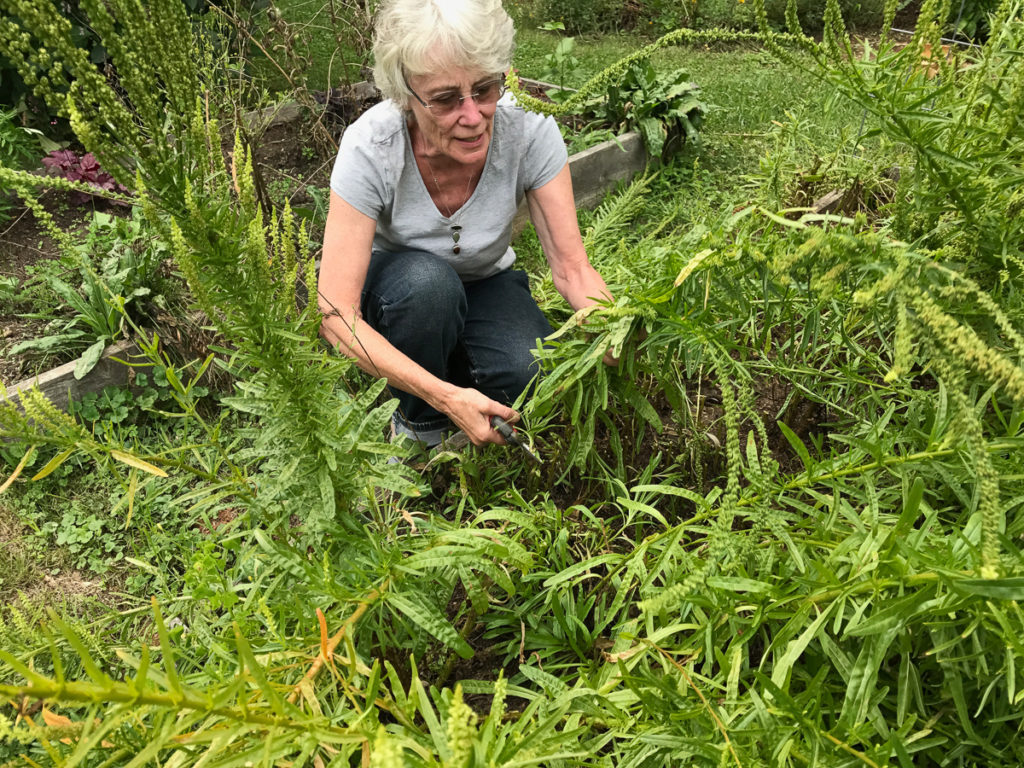 Catharine Ellis and the journey of True Colors - We feature weld-dyer Catharine Ellis, from the book True Colors, by Keith Recker who reflects on the principles that underlie his life in colour, thus far.
Catharine Ellis and the journey of True Colors - We feature weld-dyer Catharine Ellis, from the book True Colors, by Keith Recker who reflects on the principles that underlie his life in colour, thus far.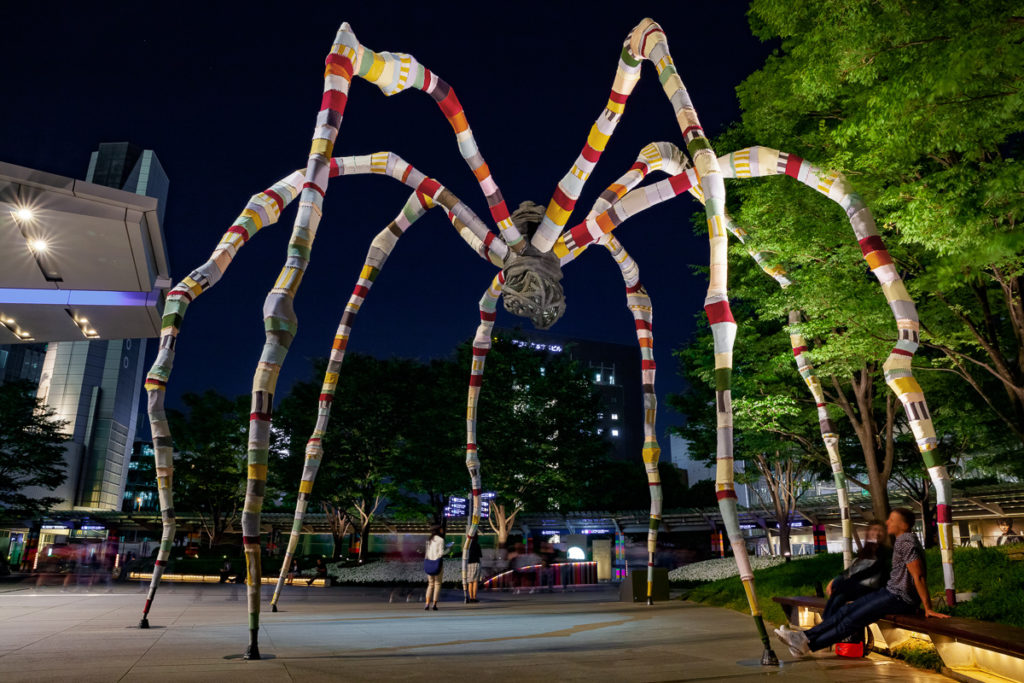 A decade of yarn bombing - Mandy Moore and Leanne Prain celebrate ten years since the first publication of Yarn Bombing and reflect how it has defied the homely associations of knitting.
A decade of yarn bombing - Mandy Moore and Leanne Prain celebrate ten years since the first publication of Yarn Bombing and reflect how it has defied the homely associations of knitting. Melissa Cameron ✿ Jewellery at our feet - The use of found materials can focus our minds on the world at our feet. Melissa Cameron's new work, Marfa TX, turns this moment into singular jewellery.
Melissa Cameron ✿ Jewellery at our feet - The use of found materials can focus our minds on the world at our feet. Melissa Cameron's new work, Marfa TX, turns this moment into singular jewellery. Kukuli Velarde ✿ A mi vida - Our August laurel goes to Peruvian-born ceramic artist Kukuli Velarde for her poignant effigy, A mi vida. This object reflects the culture of her birth, her maternal love and concern for child victims of anti-immigrant campaigns.
Kukuli Velarde ✿ A mi vida - Our August laurel goes to Peruvian-born ceramic artist Kukuli Velarde for her poignant effigy, A mi vida. This object reflects the culture of her birth, her maternal love and concern for child victims of anti-immigrant campaigns. Sandra Alfoldy ✿ Global Peace Through Craft: The Formation of the World Crafts Council - Sandra Alfoldy tells the story of the World Crafts Council and the confrontation between ethnography and modernism.
Sandra Alfoldy ✿ Global Peace Through Craft: The Formation of the World Crafts Council - Sandra Alfoldy tells the story of the World Crafts Council and the confrontation between ethnography and modernism.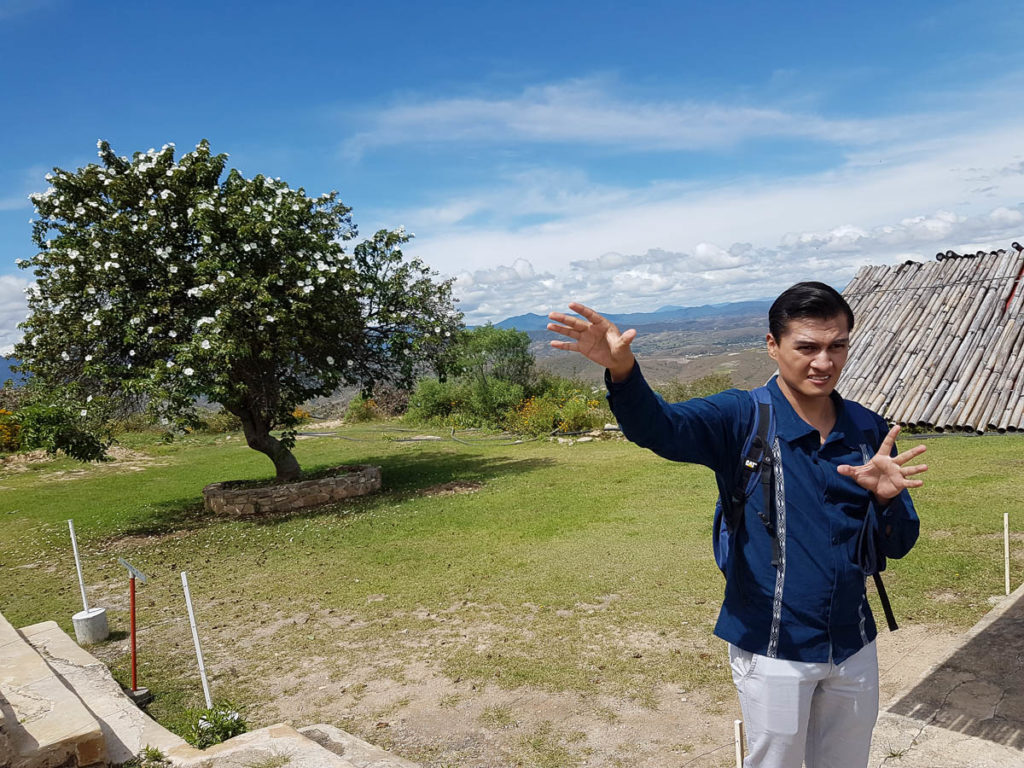 What we can learn from Zapotec culture - Garland in Oaxaca was a chance for us to learn more about the Zapotec values that underlined their mesmerising crafts, and particularly its place in the world today.
What we can learn from Zapotec culture - Garland in Oaxaca was a chance for us to learn more about the Zapotec values that underlined their mesmerising crafts, and particularly its place in the world today. The Our Lady of Mount Carmel Grotto in Rosebank, Staten Island - Joseph Sciorra's book on the votive practices of New York Italians includes the impressive grotto built to fulfil a promise.
The Our Lady of Mount Carmel Grotto in Rosebank, Staten Island - Joseph Sciorra's book on the votive practices of New York Italians includes the impressive grotto built to fulfil a promise.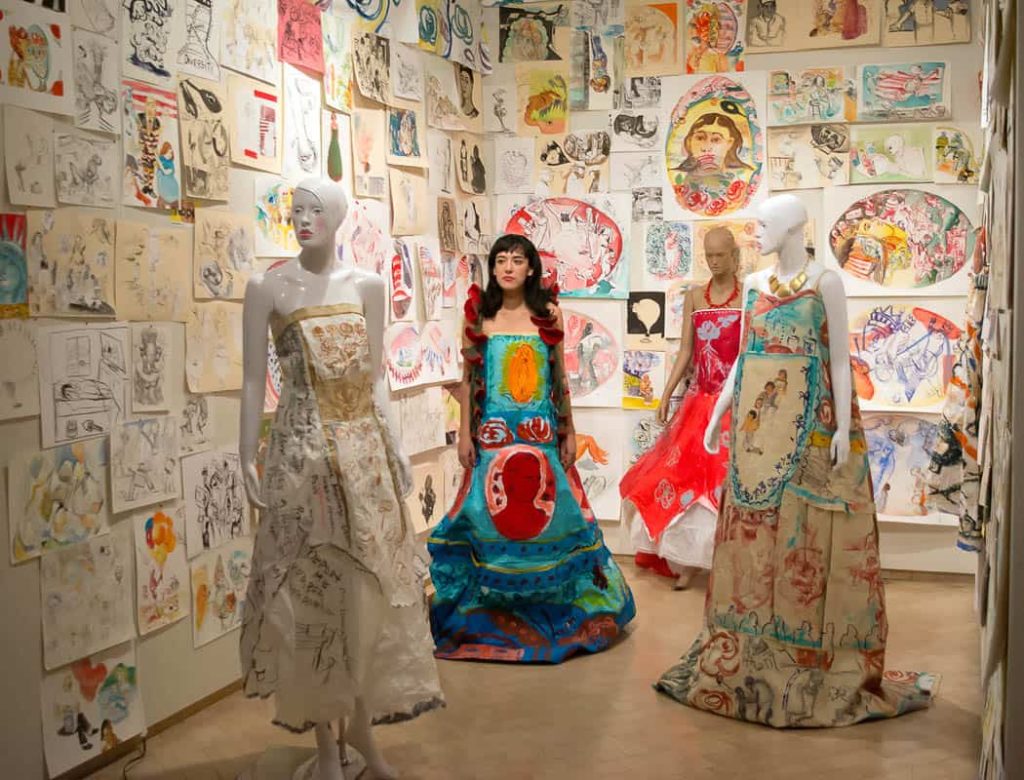 Después de Frida: Then comes the border complex - Jesús Macarena-Ávila reflects on the renewed relevance of Frida Kahlo's iconic work in the work of US-based artists
Después de Frida: Then comes the border complex - Jesús Macarena-Ávila reflects on the renewed relevance of Frida Kahlo's iconic work in the work of US-based artists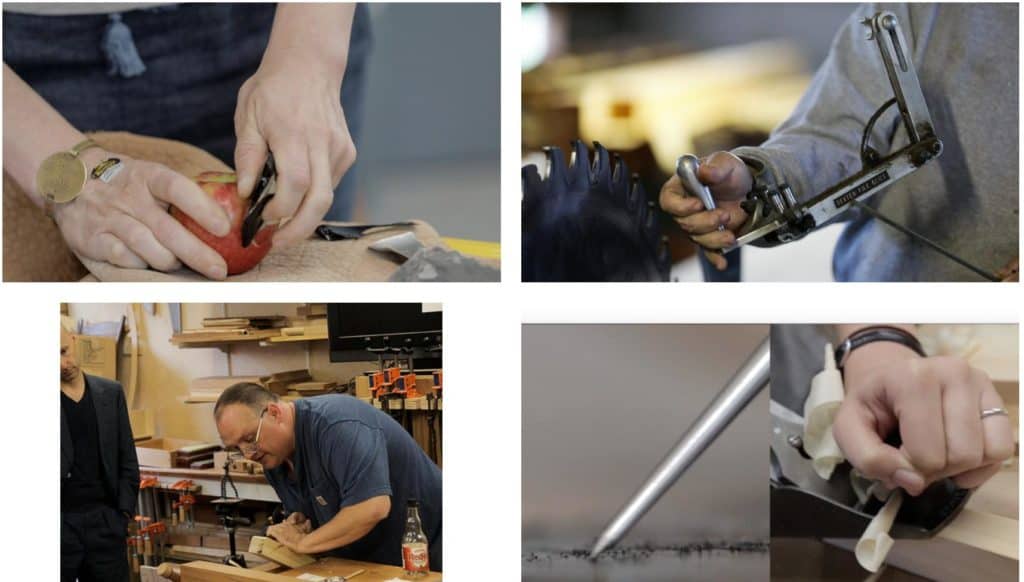 Cutting knowledge at Harvard - It's interesting to see Harvard University initiate this project on the craft basis of knowledge. This video offers a preview of "cutting" as a way of understanding how we make a world, deconstructing our philosophical concepts into material processes.
Cutting knowledge at Harvard - It's interesting to see Harvard University initiate this project on the craft basis of knowledge. This video offers a preview of "cutting" as a way of understanding how we make a world, deconstructing our philosophical concepts into material processes.  A clay voyage across the Pacific—Omnus Terra - While there is talk of building higher walls on the US border, Shannon Garson has found a way of creating exchange across the water, using ceramics.
A clay voyage across the Pacific—Omnus Terra - While there is talk of building higher walls on the US border, Shannon Garson has found a way of creating exchange across the water, using ceramics. 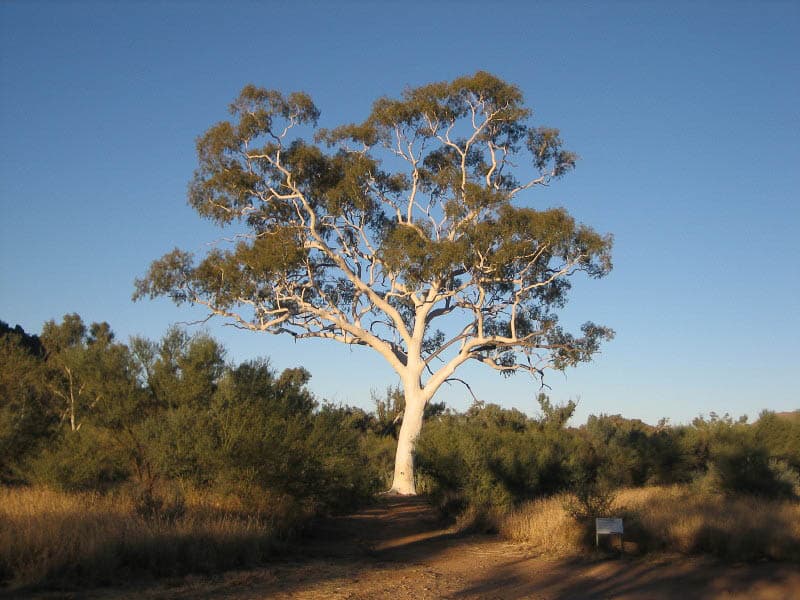 Nature craft - The traditional story of craft as an art of civilisation involves controlling nature. Fibre is spun, wood is carved, metal is cast, glass is blown and clay is thrown. Making seems to involve an improvement in the otherwise formless quality of materials found in the environment. Natural substances are mastered in order to manipulate them into forms of useful beauty.
Nature craft - The traditional story of craft as an art of civilisation involves controlling nature. Fibre is spun, wood is carved, metal is cast, glass is blown and clay is thrown. Making seems to involve an improvement in the otherwise formless quality of materials found in the environment. Natural substances are mastered in order to manipulate them into forms of useful beauty. Second Home - Shelter is a key element of life on earth. Humans construct homes, birds weave nests, insects make cocoons, animals develop skin, sea creatures and nuts grow shells for protection.
Second Home - Shelter is a key element of life on earth. Humans construct homes, birds weave nests, insects make cocoons, animals develop skin, sea creatures and nuts grow shells for protection.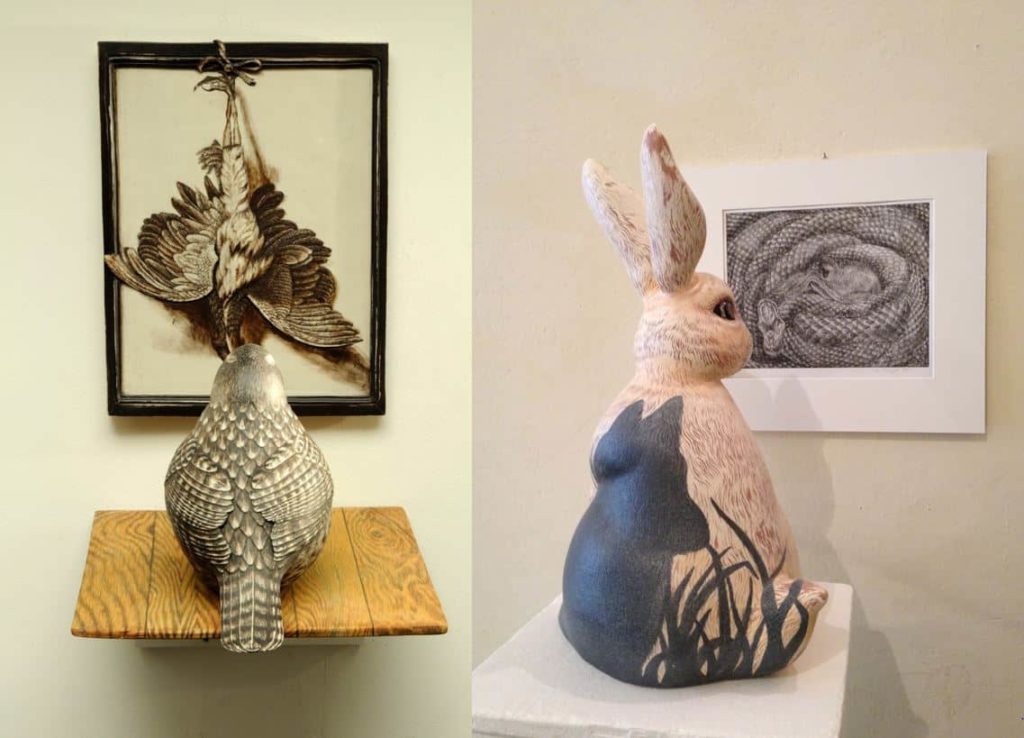 A Korean Sensibility: Something to Prove - Tony Marsh reflects on the ways Korean ceramics students have developed in response to the stimulus of Long Beach, California
A Korean Sensibility: Something to Prove - Tony Marsh reflects on the ways Korean ceramics students have developed in response to the stimulus of Long Beach, California
